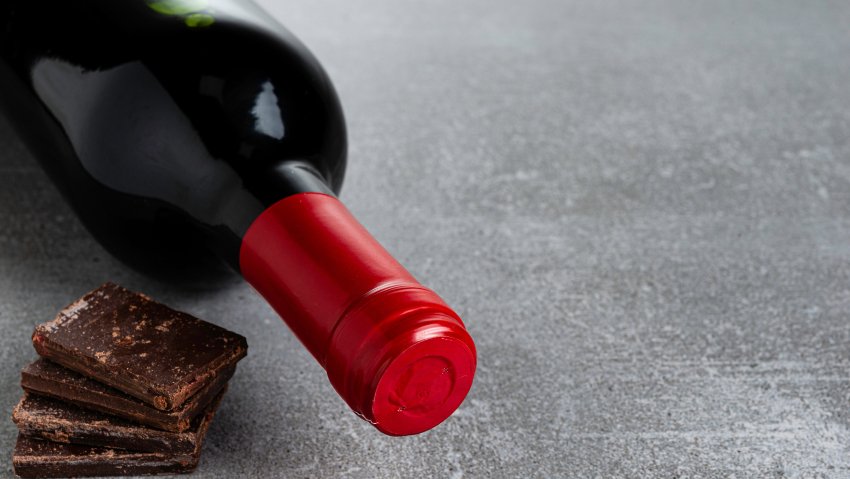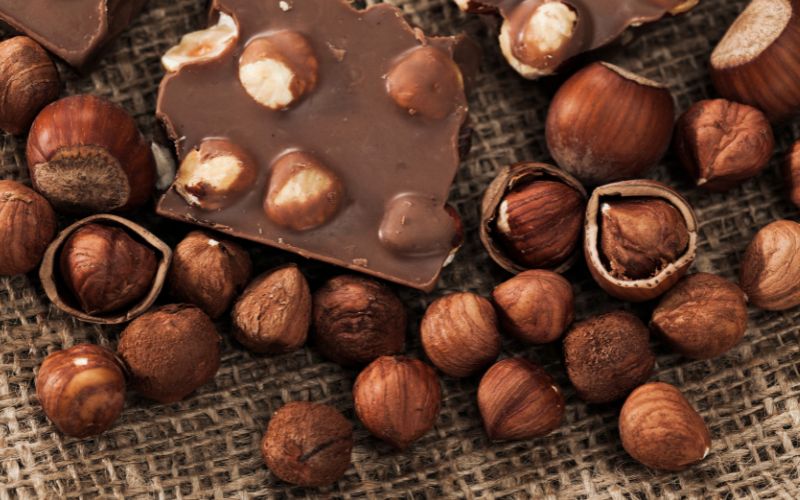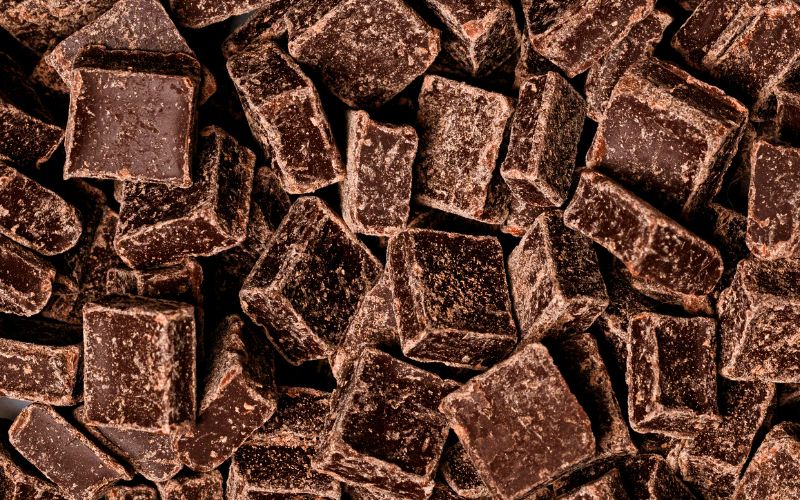The Ultimate Guide to Pairing Dark Chocolate with Different Types of Chocolate
The beauty of chocolate is that it has a distinct taste all of its own. You have the sweetness of white chocolate, the creaminess of milk, and the distinct bitterness of dark chocolate. When you start pairing these flavors, you get even more complex and enticing tastes.
In addition to pairing these different chocolates together, you can also go wild with pairing them with other foods and drinks. In fact, it may surprise you to discover just how many ways you can enjoy chocolate!
Before we delve deeper into the perfect pairings, let’s look at the differences between the three types of chocolate.
The Difference Between White And Dark Chocolate
On its own, chocolate has no natural sugar. This means that the higher the percentage of cacao, the more bitter it will taste. This most recognizably comes into play when you compare white and dark chocolate.
Some people might argue that white chocolate isn’t actually chocolate at all. It’s made using no cocoa powder or solids, but it contains cocoa butter. Additionally, it contains milk and sugar, giving it that telltale ivory or creamy color. White chocolate is also the sweetest of all types and pairs well with moscato d’asti, riesling, sparkling spumante, and the sweeter rosés. These combinations will cleanse your palate of white chocolate’s rich flavors.
Dark chocolate, on the other hand, has a very high cocoa content. Anything over 55 percent cocoa is considered dark chocolate, with most blends aiming for 70-80 percent to get that really strong flavor profile. It’s also made without any milk to cut through the cocoa.
Mixing the two together is a great way to balance the dominant flavors of each—the sweetness of the white and the bitterness of the dark. There are many confections with layers of dark chocolate and white. Alternatively, you can melt the two together for a delicious dipping sauce.
What About Milk Chocolate And Dark?
Now, let’s take a look at milk chocolate and how it compares. Milk chocolate has a distinct brown, chocolate color, which is usually lighter than dark chocolate. This is because it contains less than 50 percent cocoa powder or solids, and is made using milk (powdered, liquid, or condensed). Pair milk chocolate with wine with a light- to medium body and a ripe fruit character like Gewurztraminer, merlot, and pinot noir.
As with pairing white and dark, combining milk and dark chocolate works really well. The two balance each other out because milk chocolate is a lot sweeter than dark chocolate.
What Makes A Good Pairing With Dark Chocolate?
Now that we understand the differences between the three chocolate types, let’s look at how to pair other foods and drinks with dark chocolate. Due to the bitter and intense flavor of dark chocolate, it’s possible to pair some quite strong foods and drinks with it.
When it comes to food pairings, you need to think about texture, aroma and flavor for both the chocolate and the food you’re pairing it with. The idea is that you’ll chew the two together, so you want to create a marriage of textures but still maintain contrast in flavor and scent.
When pairing chocolate with a drink, the texture isn’t as important. What you’re really looking for is how the drink interacts with the chocolate when it’s in your mouth. During the tasting process, you should start with the chocolate and let it melt on your tongue for a few seconds. Then take a sip of your drink, letting the liquid wash over the chocolate so that the melted chocolate can interact with the drink. Finally, swallow the drink and leave the chocolate in your mouth. At this moment, you should experience a whole new taste sensation from the chocolate.
Combinations That Work With Dark Chocolate
Chocolate really is a wonderful food that’s great on its own and can be enhanced by so many other different flavor profiles. Here are some top options to try:
- Bringing In Coffee
Coffee and chocolate are a match made in heaven. They pair so well because they both come from the seeds of tropical fruit and are processed in very similar ways. The impact of the fruit and where the plants are grown can be seen in the wide array of flavor profiles that you get with both coffee and chocolate.
When it comes to dark chocolate, you want to be thinking of a strong, robust coffee to pair it with. A strong espresso, especially one with a nutty taste, can stand up against the darkest of dark chocolates.
One important thing to remember is that the fruitier or more complex the coffee, the simpler you should keep the chocolate. A plain block of dark chocolate matches well with an aromatic coffee. If you want to try more complex chocolates, then it’s best to stick to coffees that only have one or two notes in their flavor profile.
- Fruit Combinations
Dark chocolate is great for pairing with fruits, especially fruits that are very sweet, as this creates a lovely balance of bitter and sweet. Remember, you want to pair fruit that has a very strong taste, otherwise the dark chocolate will drown out the other flavor.
The best seasonal and exotic fruits for pairing with dark chocolate include raspberries, cherries, strawberries, bananas, kiwi, raisins, and coconut. They all balance well with even the strongest dark chocolates.
- Happiness is... Dark Chocolate and Wine
If you pair a bittersweet, dark chocolate with a powerful red with a high tannin content, you may overwhelm your palate. Instead, a good rule of thumb is to select wines that are juicier and softer than the chocolate you’re going to pair it with.
Dark chocolate pairs particularly well with cabernet sauvignon, merlot, and Zinfandel.
The Dinner Party Host’s Ideal Wine and Chocolate Spread
The foundation for a party boasting memorable pairings is choosing the right chocolate and wine. You must take the intensity of the various flavors into account, carefully considering each one and then matching the right ones up properly.
For example, you will pair lighter chocolates with lighter wine and present bold red wines high in tannin with darker, richer chocolates.
A good guideline is that the wine should always be sweeter than the chocolate. Wines with a whisper of residual sugar are excellent options for pairing with chocolates. Remember:
- Smooth red wines with soft tannins like carménère, Garnacha, merlot, rioja, and Valpolicella are perfect matches for the creamy texture and mild flavor of milk chocolate. This is also true for higher tannin reds like cabernet sauvignon, malbec, nebbiolo, sangiovese, and syrah.
- Although not true chocolate, white chocolate is on the menu at most parties featuring pairings of this type. It’s favored because it’s an excellent match with both dry red wines like Beaujolais and pinot noir and whites like riesling, rosé port, and Vidal blanc.
- Dark chocolate is the wine with the most health benefits and its bitterness gets balanced out when you pair it with the proper wines. Try combining it with port-styled red wines like malbec, petite syrah, and Zinfandel.
Avoid wines like sauvignon blanc for your dinner party because they’re unoaked and dry with a high acid content. Red wines with the highest tannin levels, herbal or pyrazine flavors, and those described as bone-dry are also not ideal.
Use Dark Chocolate To Build Flavor Profiles
Dark chocolate is a great base or foil for both sweet and savory dishes. The bitterness with a hint of sweetness means you can use it for breakfast, lunch and supper, or any meal at any time of the day.
It’s never a bad time for chocolate, and whether you’re pairing dark chocolate with different types of chocolate or with other foods, the results are sure to be mouth-watering.



